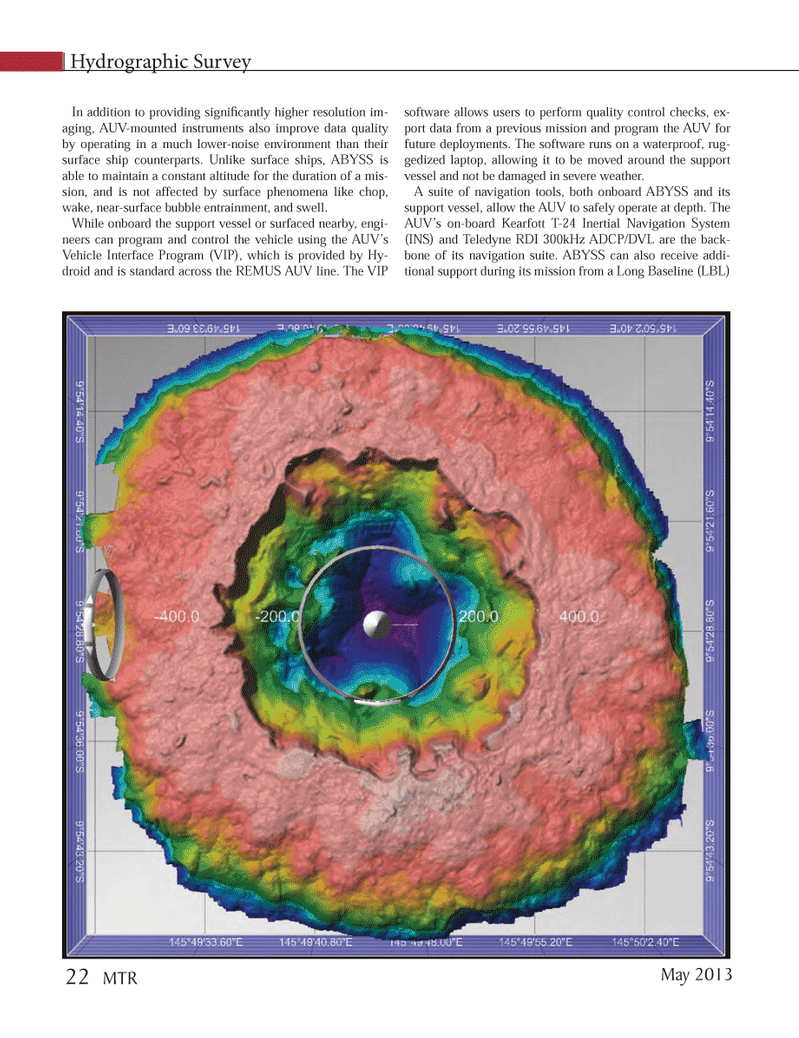
Page 22: of Marine Technology Magazine (May 2013)
Hydrographic Survey
Read this page in Pdf, Flash or Html5 edition of May 2013 Marine Technology Magazine
In addition to providing signiÞ cantly higher resolution im- aging, AUV-mounted instruments also improve data quality by operating in a much lower-noise environment than their surface ship counterparts. Unlike surface ships, ABYSS is able to maintain a constant altitude for the duration of a mis-sion, and is not affected by surface phenomena like chop, wake, near-surface bubble entrainment, and swell. While onboard the support vessel or surfaced nearby, engi- neers can program and control the vehicle using the AUVÕs Vehicle Interface Program (VIP), which is provided by Hy- droid and is standard across the REMUS AUV line. The VIP software allows users to perform quality control checks, ex- port data from a previous mission and program the AUV for future deployments. The software runs on a waterproof, rug- gedized laptop, allowing it to be moved around the support vessel and not be damaged in severe weather. A suite of navigation tools, both onboard ABYSS and its support vessel, allow the AUV to safely operate at depth. The AUVÕs on-board Kearfott T-24 Inertial Navigation System (INS) and Teledyne RDI 300kHz ADCP/DVL are the back- bone of its navigation suite. ABYSS can also receive addi- tional support during its mission from a Long Baseline (LBL) Hydrographic Survey 22 MTRMay 2013MTR #4 (18-33).indd 22MTR #4 (18-33).indd 225/6/2013 10:53:02 AM5/6/2013 10:53:02 AM

 21
21

 23
23
